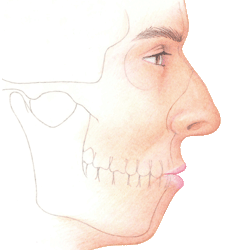Say it ain't so... major reconstructive surgery for Mike Napoli
 |
| Will this face be back in 2015? |
Contributing Writer
Mike Napoli had a tough year in 2014.
He battled injuries to his finger, back and toe this season.
Along with this it was reported that he had been battling sleep apnea almost his whole career.
Napoli wrote in a text to WEEI.com, "I've tried numerous things and none of them worked. Dental mouth piece, CPAP machine, medicines … It's just gotten to the point where I have to get this done."
So a final radical solution will be taken by changing the airflow with a procedure known as Bimaxillary Advancement surgery.
Here is what Bimaxillary Addvancement surgery entails:
 |
| Before |
The airway is, in essence, confined by the upper and lower jaws. By moving the upper jaw (maxilla) and lower jaw (mandible) forward, the entire airway can be enlarged. This procedure serves as the most effective surgical treatment for obstructive sleep apnea. It is performed on patients with moderate to severe obstructive sleep apnea as the only treatment, or when other procedures have failed. It is also performed in patients with significant jaw deformity that contributes to obstructive sleep apnea.
This procedure is performed in a hospital surgery center under general anesthesia.
Maxillomandibular advancement surgery is three to four hours in duration. Hospitalization is usually two to three days and in general the patient can return to work in four weeks.
 |
| After |
In general, the jaws do not need to be wired after surgery as they are stabilized. The integrity of the bite is preserved through the use of small titanium plates and screws, as well as braces (or arch bars) and rubber bands. Chewing is avoided for four weeks. Speech and swallowing are not affected but this procedure is associated with pain, swelling and temporary numbness of the lower lip and chin. Some changes in facial appearance will occur but is usually quite acceptable. This procedure is occasionally performed with genioglossus advancement or nasal surgery.
The hope is that this helps Napoli sleep better by having a better airflow to his system. One would like to think that sleep would help his recovery process when he does become injured, thus further improving his use by the Red Sox and keeping him on the field.
The big question is will we recognize Napoli after the procedure without the beard?
Post a comment or via twitter @erics_redsox with your thoughts.
More by Eric D. Schabell


